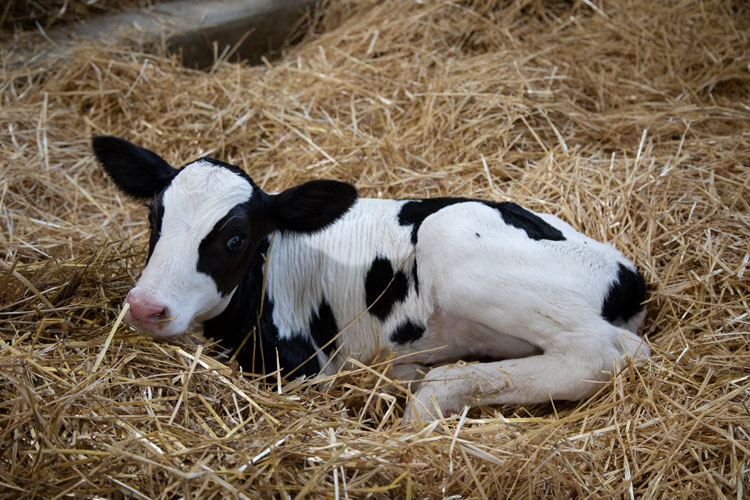
Many would consider colostrum to be the most important management factor in a calf’s life. As our standards of calf care continue to improve, methods to evaluate colostrum quality and success of passive immunity transfer deserve an update, too.
Jason Lombard, D.V.M., with USDA-APHIS Veterinary Services, and a team of calf experts got together to re-evaluate the current criteria for success and failure of passive transfer. Lombard shared their new passive immunity standards during his presentation at the Dairy Calf and Heifer Association’s annual meeting.
Lombard said that the current standard used to determine successful passive transfer has been 10 grams per liter (g/L) of immunoglobulins (IgG) and 5.2 grams per deciliter (g/dL) of serum total protein (STP). These numbers have been used since the early 1980s.
The workgroup looked at calf trends over the years. In a 1991 study, 41% of calves had failure of passive transfer with serum IgG levels below 10 g/L. In a similar study conducted in 2007, 19.2% of calves fell into that category. Then, looking at the 2014 National Animal Health Monitoring System (NAHMS) calf health data, failure of passive transfer was down to 13.7%.
Pointing to that 66% reduction in the percentage of calves with failed passive transfer, Lombard said, “I want to give a huge shout out to all producers who stepped up to the plate in terms of colostrum management and improved colostrum programs on these operations.”
With these improvements over time, the workgroup determined it was time the old passive transfer standard be adjusted. After some discussion, they established a four category scale based on IgG serum levels:
- Excellent — Greater than or equal to 25 g/L
- Good — 18 to 24.9 g/L
- Fair — 10 to 17.9 g/L
- Poor — Less than 10 g/L (failure of passive transfer)
The group also set standards for total protein levels, equivalent Brix levels, and the proposed percent of calves in each category (see table below). The goal is to have less than 10% of calves in the poor category.
Looking again at the 2014 NAHMS calf data, 35.5% of calves fell in the excellent category; 25.7% were in the good category; 26.8% were fair; and 12% dropped into the poor category. “As a national level, we are not that far off of the goal,” Lombard said.
Common reasons why calves fall into that poor category include inadequate colostrum management or dystocia (a difficult birth), but Lombard said there is a subset of calves that, even with perfect care, still have poor passive immunity, and we just don’t know why. This is an area of future study, he noted.
These standards provide realistic, achievable goals for passive transfer, which was an important objective of the group, Lombard said. As we continue to make progress in calf health, Lombard suspects that these standards may need to be changed and modified again in the next five to 10 years.
Categories | IgG levels (g/L) | Total protein levels (g/dL) | Equivalent Brix levels (%) | Proposed % of calves in each category |
Excellent | Greater than or equal to 25.0 | Greater than or equal to 6.2 | Greater than or equal to 9.4 | Greater than 40% |
Good | 18.0 to 24.9 | 5.8 to 6.1 | 8.9 to 9.3 | Approximately 30% |
Fair | 10.0 to 17.9 | 5.1 to 5.7 | 8.1 to 8.8 | Approximately 20% |
Poor | Less than 10.0 | Less than 5.1 | Less than 8.1 | Less than 10% |








